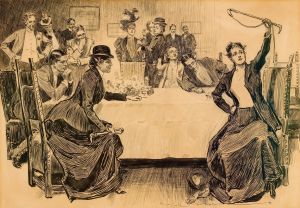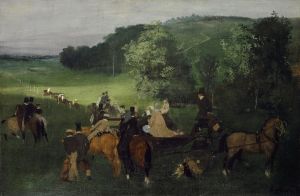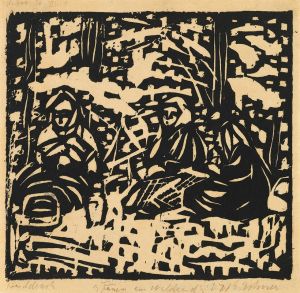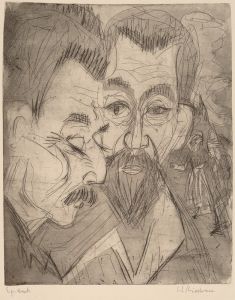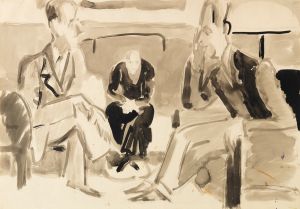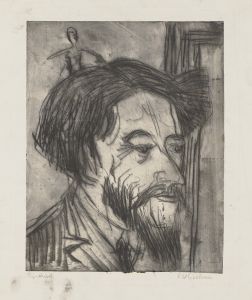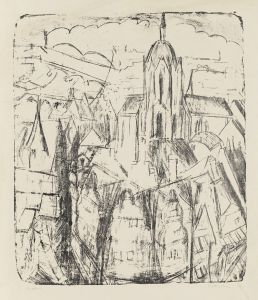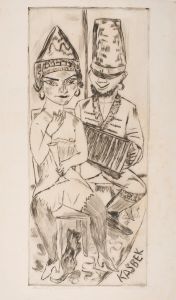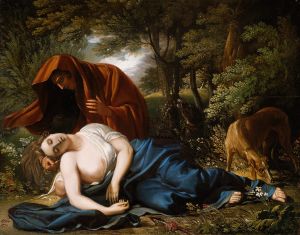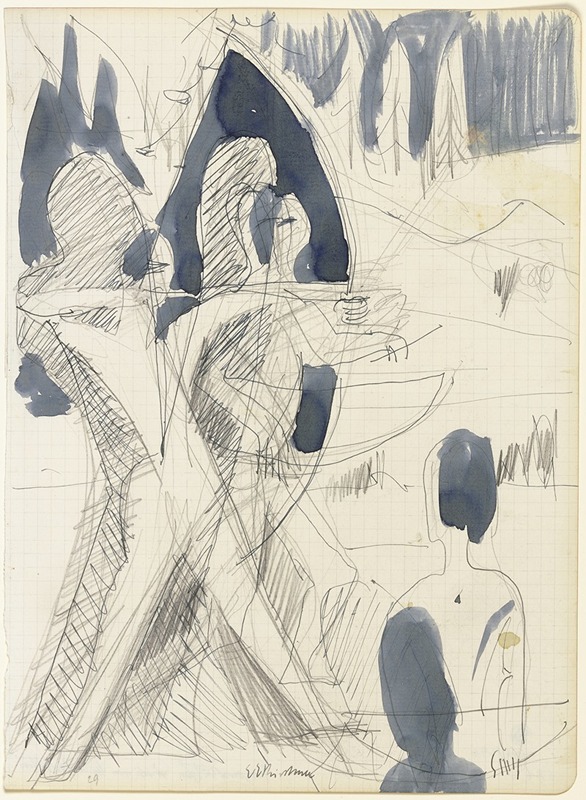
Archers
A hand-painted replica of Ernst Ludwig Kirchner’s masterpiece Archers, meticulously crafted by professional artists to capture the true essence of the original. Each piece is created with museum-quality canvas and rare mineral pigments, carefully painted by experienced artists with delicate brushstrokes and rich, layered colors to perfectly recreate the texture of the original artwork. Unlike machine-printed reproductions, this hand-painted version brings the painting to life, infused with the artist’s emotions and skill in every stroke. Whether for personal collection or home decoration, it instantly elevates the artistic atmosphere of any space.
Ernst Ludwig Kirchner, a prominent German expressionist painter and one of the founding members of the influential art group Die Brücke, created the painting "Archers" in 1935. This artwork is a notable example of Kirchner's mature style, which is characterized by bold colors, dynamic compositions, and a focus on the human figure. Kirchner's work often reflects his interest in primitive art forms and his desire to break away from traditional artistic conventions, aiming to express raw emotion and the inner experiences of modern life.
"Archers" depicts a group of figures engaged in the act of archery, a theme that Kirchner explored in several works during this period. The painting is marked by its vibrant use of color and energetic brushwork, which are hallmarks of Kirchner's expressionist style. The figures in the painting are stylized and elongated, a technique that Kirchner employed to convey movement and emotional intensity. The background is often abstracted, with bold, contrasting colors that enhance the sense of dynamism and tension within the scene.
Kirchner's choice of subject matter in "Archers" can be seen as a reflection of his interest in themes of primitivism and the natural world. Archery, as an ancient practice, may symbolize a connection to a more primal state of being, a concept that fascinated many expressionist artists who sought to capture the essence of human experience beyond the constraints of modern society. This interest in primitivism was partly inspired by non-Western art forms, which Kirchner and his contemporaries admired for their perceived authenticity and emotional directness.
The period during which Kirchner painted "Archers" was a challenging time for the artist. In the early 1930s, Kirchner faced increasing political and social pressures in Germany, particularly with the rise of the Nazi regime, which condemned modern art as "degenerate." In 1937, many of Kirchner's works were confiscated from German museums, and some were included in the infamous Degenerate Art Exhibition organized by the Nazis. This hostile environment contributed to Kirchner's decision to leave Germany and settle in Switzerland, where he continued to work until his death in 1938.
Despite these challenges, Kirchner's work, including "Archers," remains influential in the history of modern art. His innovative approach to color, form, and composition has inspired generations of artists and continues to be celebrated for its emotional depth and expressive power. Today, Kirchner's paintings are held in major collections around the world, and his contributions to the expressionist movement are widely recognized as pivotal in the development of 20th-century art.
"Archers" exemplifies Kirchner's ability to convey complex emotions and ideas through his distinctive visual language. The painting not only reflects the artist's personal struggles and interests but also serves as a testament to the enduring power of expressionism to capture the human condition in all its complexity.





